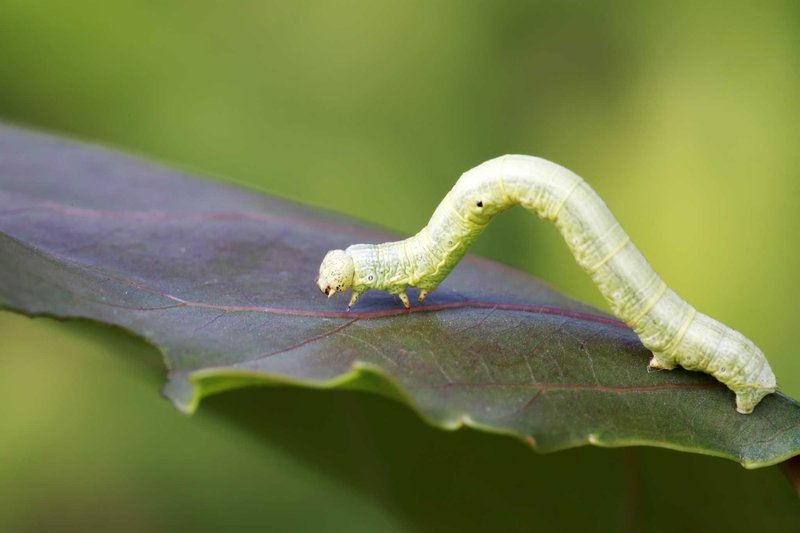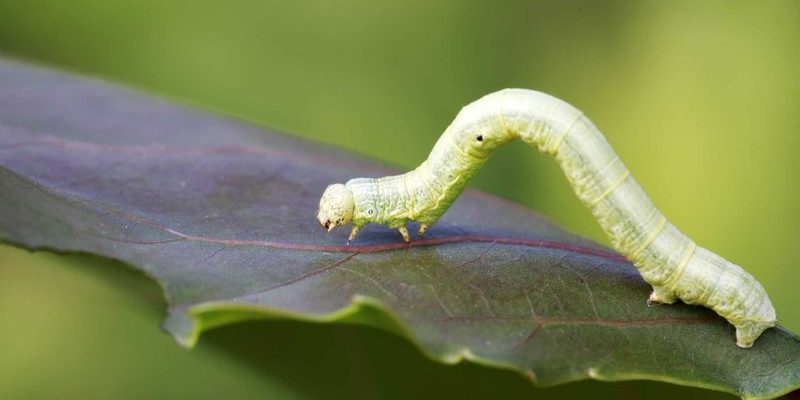
Like a neighborhood where humans establish their personal space, some animals claim territories that they defend from others of their kind. You might be curious: do inchworms do the same? Let’s dig into this question and explore the social dynamics of these quirky critters.
What Are Inchworms?
Inchworms are the larvae of moths, primarily from the geometrid family. They get their name from their unique movement style, which resembles a measuring action. As they crawl, they create a characteristic looping motion, pulling their back end forward to meet the front. This movement is quite charming and makes them memorable little creatures.
Most inchworms are green or brown, which helps them blend into their environment. This camouflage is a clever trick that protects them from predators. You might even spot them on trees or shrubs, where they munch on leaves, making them a common sight in gardens and parks.
While their appearance and motion can be captivating, understanding their behavior adds another layer to the story. Delving into their social habits—whether they’re solitary or territorial—can help us appreciate these little worms even more.
Understanding Territorial Behavior
Territorial behavior is when an animal defends a specific area against others of its kind. This can include claiming a space for feeding, mating, or shelter. Many species display this behavior to reduce competition and ensure their survival. For example, predators often establish hunting territories, while other animals, like birds, create nests and defend those areas fiercely.
Inchworms, however, operate a bit differently. Due to their size and lifestyle, they don’t seem to engage in typical territorial behavior like larger animals. You might be wondering why that is. Let me explain: their primary focus revolves around finding food and avoiding predators. Since they feed on leaves, they generally have a wide territory to explore rather than a specific area to defend.
Another factor is their life cycle. Inchworms spend a relatively short time as larvae before transforming into moths. This urgency might shift their focus away from defending a territory, as their main goal is to eat and grow quickly for metamorphosis.
Do Inchworms Compete for Resources?
Although inchworms aren’t typically territorial, that doesn’t mean they don’t compete for resources. When multiple inchworms inhabit the same tree or shrub, they might compete for the same leaves to munch on. This competition can be fierce. Imagine several little worms trying to claim the juiciest leaves—their survival depends on it.
When it comes to feeding, inchworms will often move around to other areas if their current spot runs out of food. This nomadic behavior helps ensure they can find enough sustenance without engaging in direct conflict with other inchworms.
In general, you’ll notice these creatures are opportunistic feeder rather than aggressive territorial defenders. They know when it’s time to take a step back and find a new meal rather than fight for the same one. It’s a smart way to coexist with their peers peacefully!
Interactions with Other Inchworms
When inchworms encounter one another, their interactions can be quite interesting. While they don’t establish exclusive territories, they do display certain behaviors that hint at social dynamics. For instance, you might see them crawling near each other without engaging in any aggressive actions. This social interaction typically revolves around finding food rather than asserting ownership over a particular area.
In some cases, inchworms may even use their camouflage as a defense mechanism when encountering others. They can simply blend in with their surroundings, making themselves less noticeable to anyone nearby. This behavior allows them to avoid confrontation altogether while staying safe from predators and rivals alike.
Moreover, you might notice them changing paths to avoid one another. It’s as if they’re acknowledging the presence of their peers but choosing not to engage. This subtle avoidance strategy reflects an understanding of their shared environment and a way to minimize conflict in an unterritorial lifestyle.
The Role of Environment in Inchworm Behavior
The environment plays a crucial role in shaping the behavior of inchworms. They prefer habitats with plenty of vegetation, where food is plentiful and predators are less likely to be lurking. In such areas, inchworms can thrive and find resources without much competition.
Weather conditions also impact their behavior. For example, during dry spells or cold weather, they might be less active, which could reduce encounters with other inchworms. Conversely, during warm and wet periods, inchworm populations may surge, leading to more competition for food and perhaps an increase in their social interactions.
In essence, the availability of resources, weather patterns, and the overall ecosystem can influence how inchworms interact. Their behavior is adaptable, allowing them to navigate their surroundings effectively.
So, do inchworms display territorial behavior? Not really. Instead, they navigate their environment in search of food and safety while maintaining a cooperative relationship with others of their kind. Their lack of aggressive territory defense is an interesting aspect of their life cycle and behavior.
While inchworms might not establish rigid territories, they certainly engage with their surroundings in a fascinating way. Their unique movement and adaptability make them one of nature’s quiet wonders. Next time you spot an inchworm, take a moment to appreciate the small world it inhabits and the intricate social dynamics at play—who knew these tiny beasts could be so captivating?

